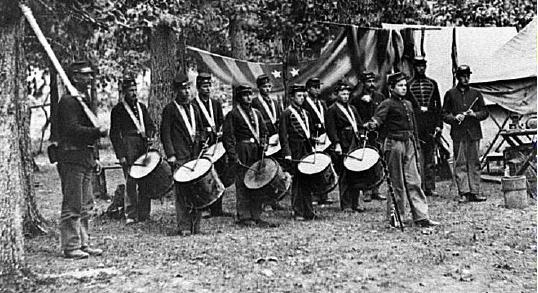A Glimpse At The History of Drum Corps

There have been volumes written on the history of the musical ensembles formed as drum and bugle corps. My article will touch on just a few of the highlights which brought this beloved practice to us throughout the centuries and is still actively prominent today.
If you have had the pleasure of participating as a member of a corp, it’s no secret where the attraction lies. If you have even been in an audience of spectators you have felt the primal rhythm that calls out our innate patriotism. It’s impossible not to be moved by the steady call of the drums and brass, and that’s exactly how the corps came into existence in the first place.
When men needed to be rallied for combat, the bugle was heard from a long piece away. The drum supported the call to action and together they helped to unite in a cause. War has never been approached from the cushy seats of luxurious waterloo limousine services and getting men and their families to rally for a campaign meant stirring up their primal instincts.
Drums have been used in all cultures to assimilate the beating heart of an event. Add the bugles or other brass, and it ignites the flames of courage. Military field “music” was designed out of practicality for moving a unit forward or even as a signal to retreat. The field corp was formed for the purpose of sounding a state of alertness to the people in the villages and the men on the battlefield. These approaches have been known to have been used effectively to signal warriors in this country as far back as the Revolutionary War.
The fife and drum units were noted as part of history long before the continental US was formed. Fife and drum corps, were usually made up of a small group of maybe 3 to four men who would use a wooden flute or fife and a pulled wooden snare drum to accompany an army on the march. They helped to keep a cadence and the moral high.
They were upbeat after a win and offered to support a determined sense of duty through their ongoing rhythmic pattern. In the evenings they became a bit more lighthearted and played for entertainment purposes gathering men in song. Music has always been a moral booster and reminds us all of pleasant times.
As armies trained in more precise movements, the drummers assisted the troops by delivering execution signals. The duty of a fife or drummer included preparatory alerts They were used to notify the time of day, and today taps are still played in the morning and at the close of the evening. Since America’s Revolutionary War, it was not unusual for a company of approximately 100 men to be assigned two fifers and two drummers to supply the music for the regiment to march by.
Drum corps along with the fifers, and later, buglers would lead the companies at the head of the procession as a formal announcement. Later on as the military formed larger, more comprehensive musical bands, the drum and bugle or fife corp traditionally lead the way ahead of the other musicians. As a modern day practice when an Army band is called to move the Drum Major’s command is “Band and Drums. . .”. This has it’s basis in British tradition.
As time has moved on, the pride of a unit’s performance began to play a bigger role. Different corps began to compete with one another. The competition circuit went outside the confines of the military, and private drum corps sprang up throughout the country. The more established corps with their history, of course, led the way for beginner groups to take hold. Rivalries have produced some of the best competitive performances imaginable.
These days getting into a top notch drum corp means you have to be the best. In order to keep the tradition alive and solid, remembering the honorable beginnings of any drum corp is at the center of what makes what we do our pride and joy.